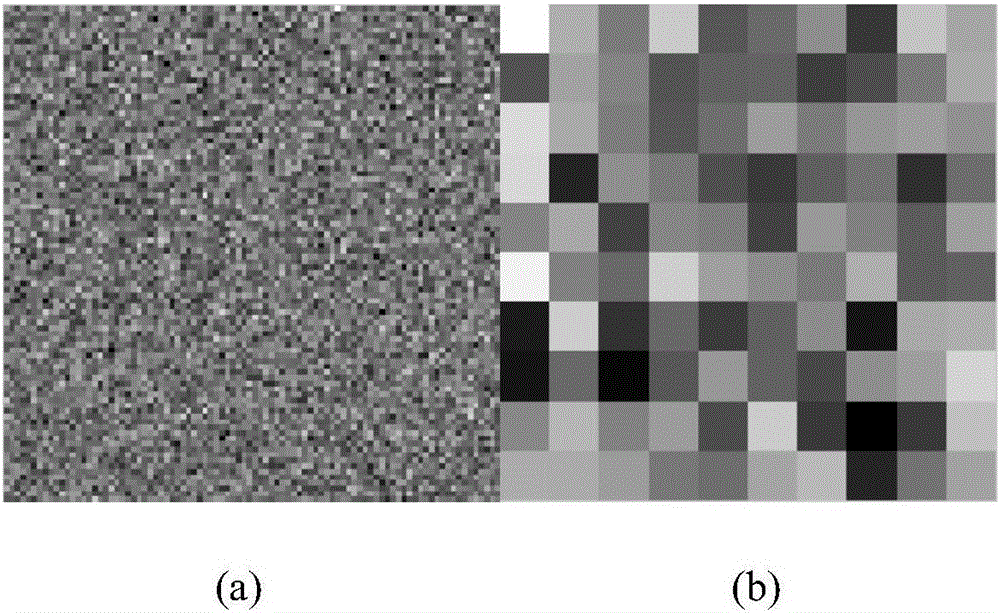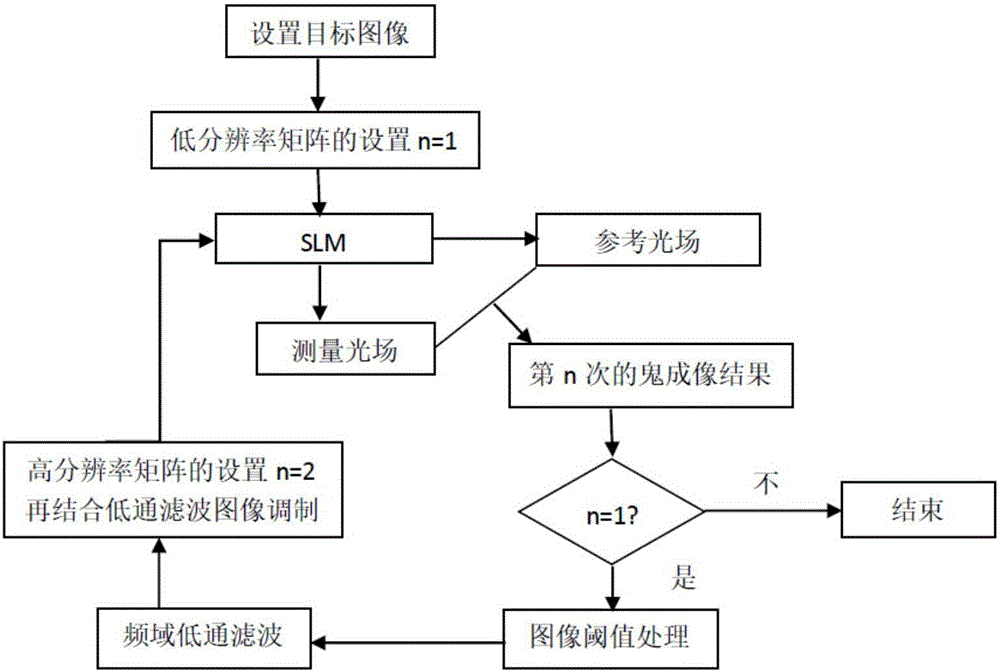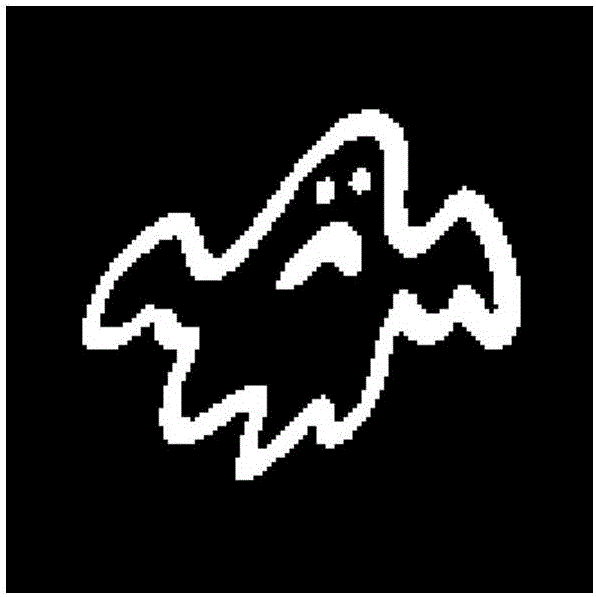Secondary imaging method for restraining one-armed ghost imaging defocus blur
A defocus blur and secondary imaging technology, applied in the field of image processing, can solve the problems of large amount of calculation, many noise points, and difficult to work, and achieve the effect of improving utilization rate, saving data collection time, and saving calculation time
- Summary
- Abstract
- Description
- Claims
- Application Information
AI Technical Summary
Problems solved by technology
Method used
Image
Examples
Embodiment
[0046] The secondary imaging method for suppressing the defocus blur of single-arm ghost imaging in the present invention can be used for reconstruction and restoration of defocus blur images of two-dimensional and three-dimensional objects, and the specific steps are as follows figure 2 The process shown is executed.
[0047] Definition of SNR:
[0048] M S E = 1 M N Σ x = 1 M Σ y = 1 N | f ( x , y ) - f t r ( x , y ) | 2 ...
PUM
 Login to View More
Login to View More Abstract
Description
Claims
Application Information
 Login to View More
Login to View More - R&D
- Intellectual Property
- Life Sciences
- Materials
- Tech Scout
- Unparalleled Data Quality
- Higher Quality Content
- 60% Fewer Hallucinations
Browse by: Latest US Patents, China's latest patents, Technical Efficacy Thesaurus, Application Domain, Technology Topic, Popular Technical Reports.
© 2025 PatSnap. All rights reserved.Legal|Privacy policy|Modern Slavery Act Transparency Statement|Sitemap|About US| Contact US: help@patsnap.com



